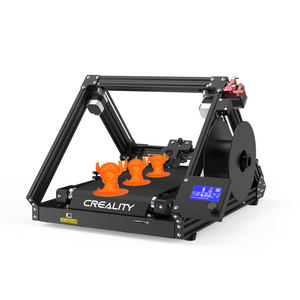Introduction to Fused Deposition Modeling (FDM) Technology 3D Printers
Fused Deposition Modeling (FDM) technology is a groundbreaking method in the realm of 3D printing that has transformed how industries create prototypes and functional components. By using thermoplastic filaments, FDM printers allow users to produce parts layer by layer, offering unparalleled precision and control. This innovative technology is widely adopted in various sectors, including manufacturing, aerospace, automotive, and education, due to its versatility and cost-effectiveness.
Types of Fused Deposition Modeling (FDM) Technology 3D Printers
FDM technology can be categorized into several types, tailored to various needs and applications. Understanding these distinctions can help users choose the right printer for their projects.
- Entry-Level FDM Printers: Ideal for beginners and educational institutions, these printers are user-friendly and affordable, making them perfect for learning and experimentation.
- Professional-Grade FDM Printers: Designed for serious makers and businesses, these models typically support larger build volumes and offer enhanced precision and material options.
- Industrial FDM Printers: Built for heavy-duty applications, these printers can handle high production rates and utilize advanced materials, catering to industries like aerospace and automotive.
- Modular FDM Printers: Featuring customizable components, these printers allow users to upgrade or alter their machines to meet specific requirements or improve performance.
Applications of Fused Deposition Modeling (FDM) Technology 3D Printers
The applications of FDM technology are vast and varied, making it an invaluable tool across numerous sectors. Some of the most notable applications include:
- Prototyping: Rapid prototyping is one of the primary applications, allowing companies to quickly turn ideas into tangible objects for testing and validation.
- Manufacturing: FDM printers are increasingly used to produce end-use parts and components, reducing lead times and materials waste.
- Education: Many educational institutions utilize FDM technology to teach students about engineering, design, and manufacturing processes.
- Healthcare: Custom prosthetics and dental models are increasingly made using FDM technology, tailored to fit individual patient needs.
Advantages of Fused Deposition Modeling (FDM) Technology 3D Printers
FDM technology comes with a plethora of advantages that make it the preferred choice for many users. Here are some key benefits:
- Cost-Effectiveness: FDM printers are generally less expensive than other 3D printing technologies, both in terms of acquisition cost and material usage.
- Material Variety: A wide range of filaments, including PLA, ABS, and PETG, allows users to choose materials based on specific project requirements.
- User-Friendly: Many FDM printers feature intuitive interfaces and software, making them accessible for individuals with varying levels of experience.
- Sustainability: With the advent of biodegradable and recyclable filament options, FDM printing offers environmentally-friendly manufacturing solutions.














































